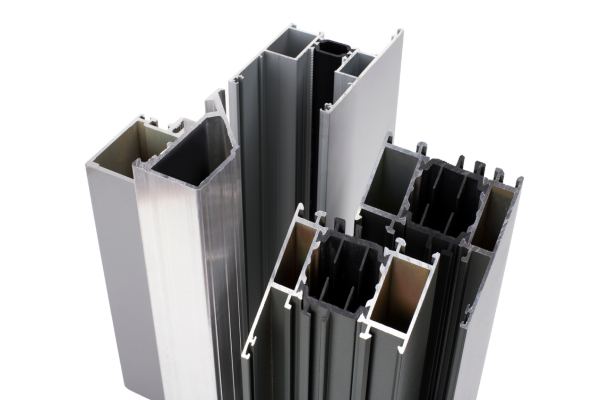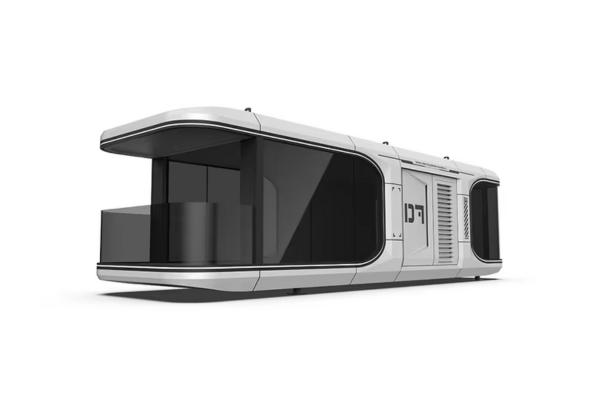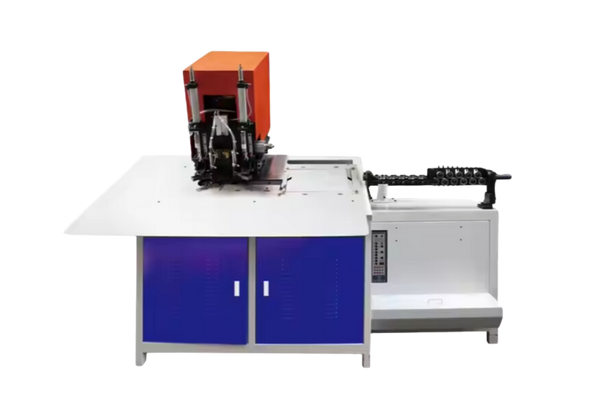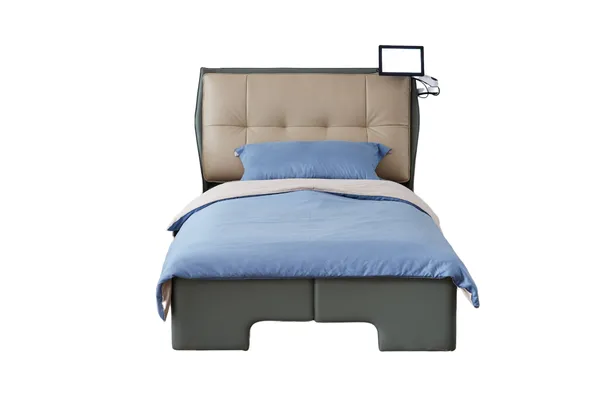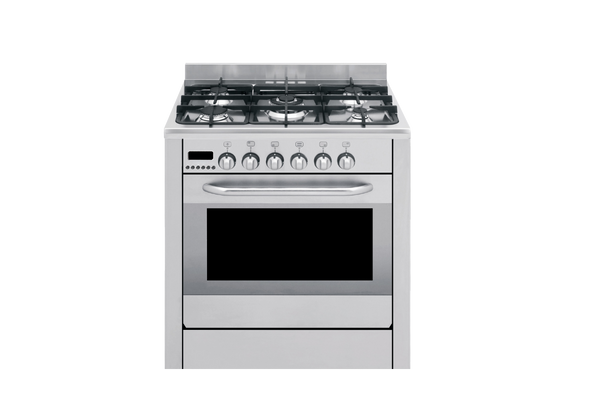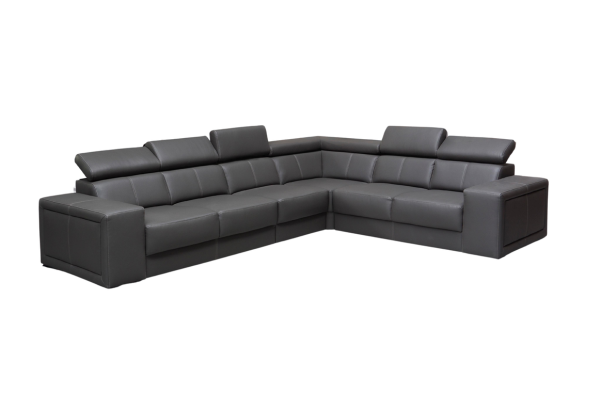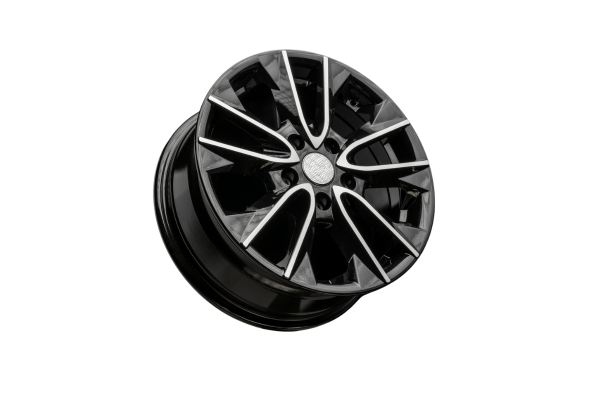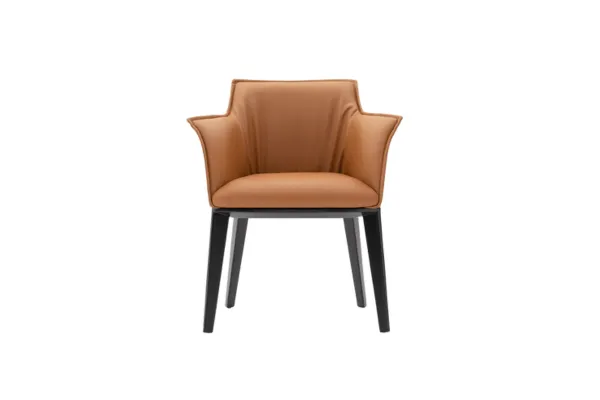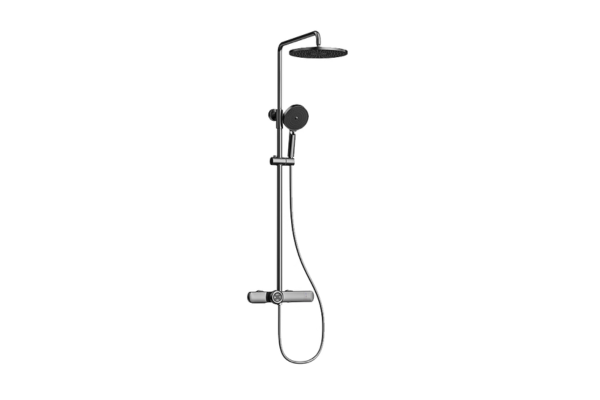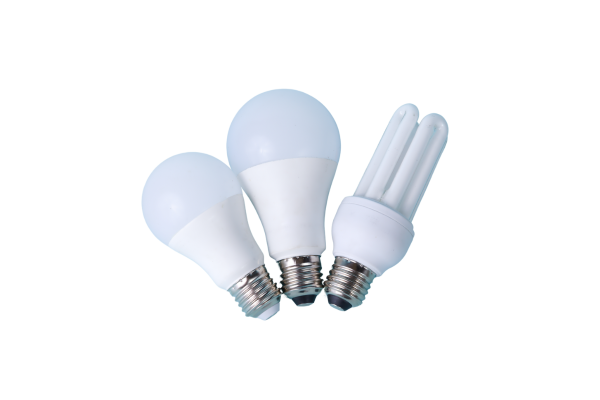When it comes to managing heat in electronic devices, custom aluminum heatsinks play a crucial role. These specialized components are designed to dissipate heat and prevent overheating, ensuring the optimal performance and longevity of electronic systems.Custom aluminum heatsinks play a crucial role in the thermal management of electronic devices, ensuring optimal performance and preventing overheating. These heatsinks are specifically designed and tailored to meet the unique requirements of each application, making them highly effective in dissipating heat and maintaining the longevity of electronic components.
One of the key benefits of custom aluminum heatsinks is their excellent thermal conductivity. Aluminum is known for its high thermal conductivity, allowing heat to efficiently transfer from the electronic device to the heatsink. This ensures that the heat is effectively dissipated, preventing the device from overheating and potential damage.custom aluminum heatsinks offer flexibility in design, allowing for precise customization to fit the specific requirements of the electronic device. This includes considerations such as size, shape, fin density, and alloy selection. 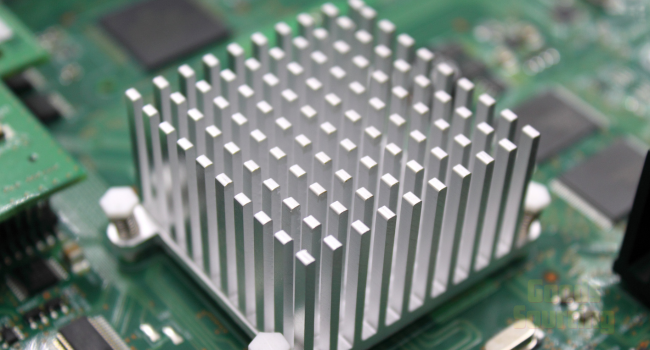 By tailoring the heatsink to the device, maximum heat dissipation can be achieved, improving overall performance and reliability.
By tailoring the heatsink to the device, maximum heat dissipation can be achieved, improving overall performance and reliability.
custom aluminum heatsinks are lightweight and durable, making them ideal for a wide range of applications. Their corrosion resistance properties ensure longevity and reliability, even in harsh environments. This makes them suitable for various industries, including consumer electronics, lighting fixtures, industrial equipment, and more.custom aluminum heatsinks are essential components in electronic devices, providing effective heat dissipation and ensuring the longevity and reliability of the devices. Their thermal conductivity, customization options, lightweight nature, and durability make them a preferred choice for thermal management in various applications. By investing in custom aluminum heatsinks, manufacturers can optimize the performance of their electronic devices and enhance customer satisfaction.
Thermal Conductivity and Material Selection
One of the most critical factors in heatsink design is thermal conductivity. The ability of the heatsink to efficiently dissipate heat depends on the thermal conductivity of the material used. Aluminum is a popular choice for heatsinks due to its excellent thermal conductivity and lightweight nature. When selecting the aluminum alloy for your heatsink, consider factors such as thermal conductivity, mechanical properties, and corrosion resistance.
Fin Design and Optimization
The design of the fins plays a crucial role in the heat dissipation capability of the heatsink. The shape, size, and density of the fins determine the surface area available for heat transfer. By optimizing the fin design, you can maximize the heat dissipation efficiency of the heatsink. Consider factors such as fin thickness, spacing, and shape to achieve the desired thermal performance.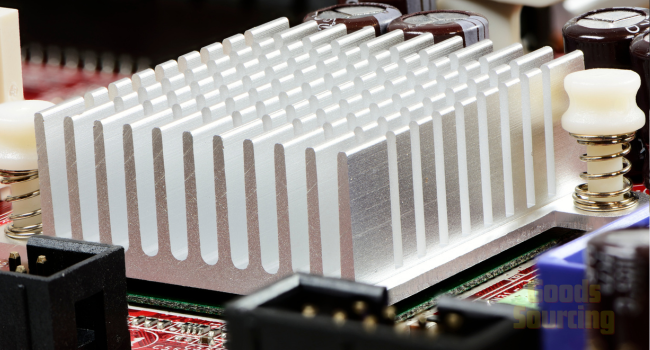
Manufacturing Process and Tolerances
The manufacturing process used to create the custom aluminum heatsink is another important consideration. Different manufacturing methods, such as die-casting, forging, CNC machining, or extrusion, offer varying levels of precision and cost-effectiveness. Choose a manufacturing process that aligns with your design requirements and budget. Additionally, consider the tolerances required for your heatsink to ensure compatibility with other components and the overall system.
Testing and Quality Assurance
To ensure the performance and reliability of your custom aluminum heatsink, it is crucial to conduct thorough testing and quality assurance measures. This includes inspections during and after production to verify that the heatsink meets the specified requirements. Consider implementing testing protocols such as thermal testing, mechanical testing, and dimensional inspections to validate the performance and quality of the heatsink.
By carefully considering these factors in the design of your custom aluminum heatsink, you can create a high-performance and reliable thermal management solution for your electronic devices.
Thermal Conductivity and Material Selection
The thermal conductivity and material selection are crucial factors to consider when designing custom aluminum heatsinks. The thermal conductivity of the material determines how efficiently heat is transferred from the heat source to the surrounding environment.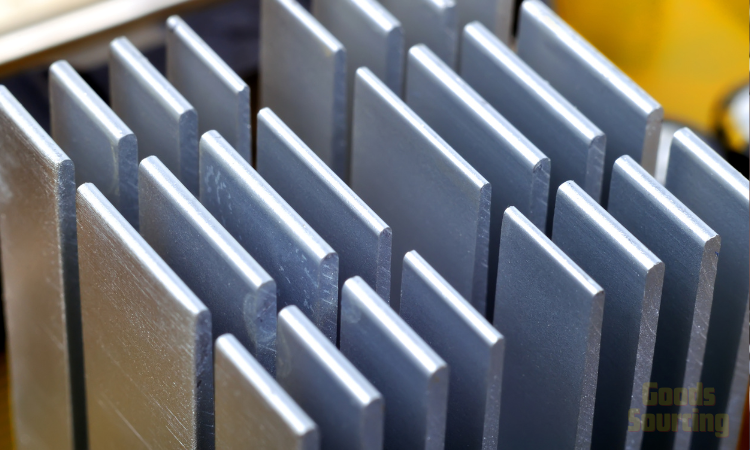
Aluminum is a popular choice for heatsinks due to its excellent thermal conductivity, lightweight nature, durability, and corrosion resistance. The most commonly used aluminum alloys for heatsinks are the 6000 series, such as 6061 and 6063, which have thermal conductivities of 166 W/mK and 201 W/mK, respectively.
When selecting the material for a custom aluminum heatsink, it is important to consider the specific requirements of the application. The thermal conductivity of the chosen material should be high enough to effectively dissipate heat, ensuring optimal performance and preventing overheating. Additionally, the material should have good mechanical properties to withstand the thermal stresses and vibrations that may occur.Other factors to consider include the availability and cost of the material, as well as its compatibility with any surface treatments or coatings that may be applied. It is also important to ensure that the chosen material is readily available and can be easily sourced for production.the thermal conductivity and material selection play a vital role in the performance and effectiveness of custom aluminum heatsinks. By carefully considering these factors, designers can ensure that the heatsinks meet the specific thermal requirements of their applications, resulting in efficient heat dissipation and reliable thermal management.
Fin Design and Optimization
When it comes to designing custom aluminum heatsinks, the fin design and optimization play a crucial role in achieving optimal thermal performance. The fins of a heatsink are responsible for dissipating heat from the heat source to the surrounding air. Therefore, it is essential to carefully consider the design and optimization of the fins to ensure efficient heat transfer.
One important aspect of fin design is the shape and geometry of the fins. Different fin shapes, such as elliptical, star, spiral, square, or round, can be created to maximize the surface area for heat dissipation. By increasing the surface area, more heat can be transferred to the surrounding air, resulting in better cooling performance. Additionally, the spacing and thickness of the fins should be carefully determined to strike a balance between maximizing surface area and maintaining structural integrity.Optimization of the fin design also involves considering factors such as airflow and pressure drop. The spacing between the fins should allow for sufficient airflow to ensure effective heat transfer. At the same time, the fin design should minimize pressure drop, which can impede airflow and reduce cooling efficiency.
To achieve the best fin design and optimization, advanced simulation tools can be utilized. These tools can analyze the heat transfer characteristics and airflow patterns within the heatsink, allowing for fine-tuning of the fin design to maximize cooling performance.the design and optimization of fins in custom aluminum heatsinks are crucial for achieving optimal thermal performance. By carefully considering factors such as fin shape, spacing, and thickness, as well as utilizing advanced simulation tools, manufacturers can create heatsinks that efficiently dissipate heat and ensure the reliable operation of electronic devices.
Manufacturing Process and Tolerances
The manufacturing process of custom aluminum heatsinks plays a crucial role in ensuring their performance and reliability. To meet the technical requirements of these heatsinks, manufacturers employ advanced techniques and adhere to strict tolerances.
One of the key steps in the manufacturing process is the extrusion of the aluminum. This process involves heating the aluminum billet and forcing it through a die to create the desired shape of the heatsink. The extrusion process allows for precise control over the dimensions and fin density of the heatsink, ensuring optimal thermal performance.After extrusion, the heatsinks undergo secondary machining to further refine their design. This may involve drilling holes, adding cut-outs, or creating complex contours to meet specific requirements. Manufacturers use computer-controlled machinery to achieve high precision and maintain tight tolerances.
Tolerances are critical in the manufacturing of custom aluminum heatsinks as they ensure consistency and reliability. Manufacturers carefully monitor the dimensions, tolerances, and surface finishes of the heatsinks to meet the specified requirements. This attention to detail guarantees that the heatsinks will fit perfectly and perform effectively in their intended applications.Quality assurance is another essential aspect of the manufacturing process. Manufacturers conduct rigorous testing and inspection to ensure that the heatsinks meet the highest standards of performance and reliability. By adhering to strict quality control measures, manufacturers can deliver heatsinks that consistently meet or exceed customer expectations.
In summary, the manufacturing process of custom aluminum heatsinks involves extrusion, secondary machining, and adherence to strict tolerances. This process ensures that the heatsinks meet the technical requirements and deliver optimal thermal performance. With a focus on quality assurance, manufacturers can provide heatsinks that meet the highest standards of performance and reliability.
Testing and Quality Assurance
Ensuring the quality and reliability of custom aluminum heatsinks is crucial for their effective performance in thermal management. Testing and quality assurance processes play a vital role in verifying the functionality and durability of the heatsinks.One of the key aspects of testing is thermal performance evaluation. Through various testing methods, such as thermal resistance measurement and thermal imaging, the ability of the heatsink to dissipate heat efficiently can be assessed. This helps to validate the design and optimize its performance. mechanical testing is also conducted to assess the structural integrity of the heatsinks. Tests such as vibration resistance, impact resistance, and load-bearing capacity ensure that the heatsinks can withstand the rigors of their intended applications.
Quality assurance processes are implemented throughout the manufacturing process to ensure that the custom aluminum heatsinks meet the highest standards. These processes include material inspection, dimensional accuracy checks, surface finish evaluation, and adherence to industry specifications and standards.reliability testing is conducted to assess the long-term performance and durability of the heatsinks. This includes accelerated aging tests, temperature cycling tests, and humidity tests to simulate real-world operating conditions and ensure the heatsinks can withstand prolonged use.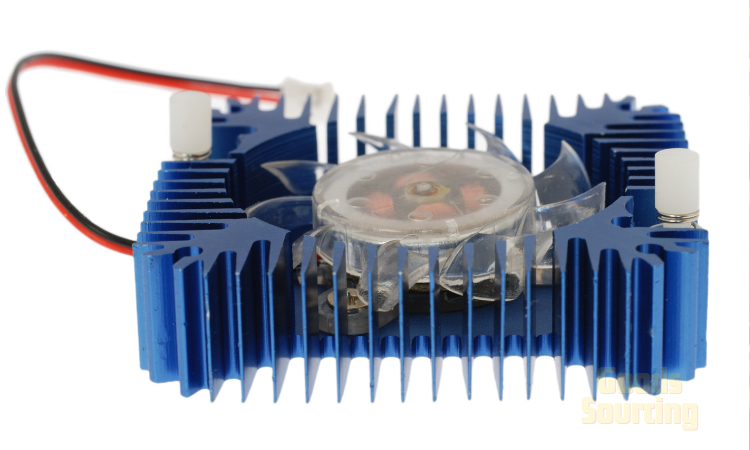
By implementing rigorous testing and quality assurance measures, manufacturers can guarantee that custom aluminum heatsinks meet the technical requirements and deliver optimal thermal management solutions for a wide range of applications.
Detailed Specifications for Three Typical Aluminum Heatsink Applications
1. High-Power LED Street Light Heatsink
Application Features: Outdoor environment, high power, long-term operation
Detailed Specifications:
Material Requirements
Alloy: 6063-T5
Thermal Conductivity: ≥200 W/(m·K)
Surface Treatment: 20μm Hard Anodizing
Structural Parameters
Base Plate Thickness: 5mm (±0.2mm)
Cooling Fin Height: 35mm (±0.3mm)
Fin Spacing: 8mm (±0.2mm)
Total Heat Dissipation Area: ≥0.5m²/kg
Performance Requirements
Thermal Resistance: ≤0.3°C/W
Operating Temperature: -40°C to +85°C
IP Protection Grade: IP65
Salt Spray Resistance: 1000 hours
2. Industrial Servo Motor Heatsink
Application Features: High precision, high vibration environment
Detailed Specifications:
Material Requirements
Alloy: 6061-T6
Tensile Strength: ≥310 MPa
Surface Treatment: Black Anodizing 15μm
Structural Parameters
Base Plate Thickness: 8mm (±0.1mm)
Contact Surface Flatness: 0.03mm
Fin Thickness: 2mm (±0.1mm)
Thread Depth: 2× thread diameter
Performance Requirements
Thermal Resistance: ≤0.5°C/W
Vibration Resistance: 10-2000Hz, 10G
Operating Temperature: -20°C to +70°C
Mounting Torque: 8-10 N·m
3. Computer CPU Cooling Heatsink
Application Features: High efficiency, compact design
Detailed Specifications:
Material Requirements
Alloy: 6063-T5
Thermal Conductivity: ≥220 W/(m·K)
Surface Treatment: Nickel Plating
Structural Parameters
Base Plate Thickness: 3mm (±0.1mm)
Total Height: 45mm (±0.2mm)
Fin Thickness: 0.3mm (±0.05mm)
Fin Spacing: 1.8mm (±0.1mm)
Performance Requirements
Thermal Resistance: ≤0.2°C/W
Maximum Heat Load: 130W
Operating Temperature: 0°C to +70°C
Contact Pressure: 30-40 PSI
Quality Standards
Surface Roughness: Ra ≤0.8μm
Flatness: ≤0.02mm/100mm
Perpendicularity: 0.1mm
Custom Solutions by Goodssourcing
Goodssourcing stands out by offering customized solutions that cater to your unique needs. From free design consultations to tailored alloy selection and blueprint creation, we are with you every step of the way. Our team ensures that all factors—such as strength, corrosion resistance, and aesthetic finishes—are addressed with precision.
Free Design & Blueprint Creation: We provide complimentary design consultations and blueprints to ensure your project meets all specifications before production.
Custom Alloy Selection: Based on your needs, we’ll guide you to the best alloy choice, ensuring optimal performance and durability.
Full Production Support: From die design to extrusion, cooling, and surface finishing, we ensure that every phase is executed with precision and efficiency.
Contact Goodssourcing today to begin your custom aluminum extrusion project, and let us help bring your vision to life with our comprehensive manufacturing and consulting services.
